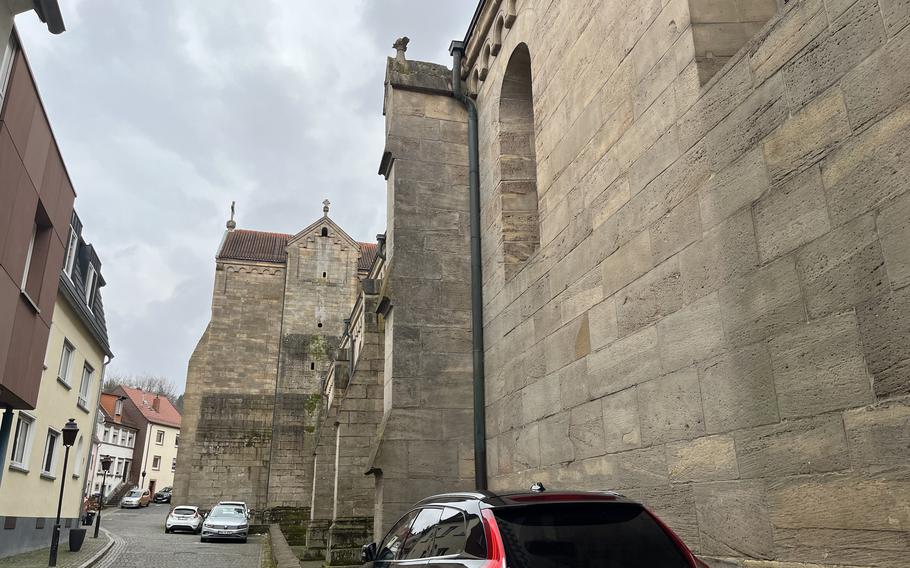
The 12th century Abteikirche, or abbey church, in Otterberg, Germany, has a length of 262 feet. (Heather Benit/Stars and Stripes)
On our first family bike riding adventure of the season, we spent more time sightseeing in the southwestern German town of Otterberg than cycling the path that led us there.
The plan was to make our way along a roughly 2.5-mile section of the Pfälzer Land cycle path from the Otterbach train station to neighboring Otterberg, a historic town of about 5,000 about 6 miles north of Kaiserslautern.
The Pfälzer Land route runs east-west for about 30 miles from Altenglan to Enkenbach, and the moderately difficult dirt terrain of the stretch we chose passes streams and almond trees, which were starting to bloom.
Once in Otterberg, we intended to take a break exploring its 12th-century Abteikirche, the second-largest church in the Pfalz region after the cathedral in Speyer.
Instead of being just a brief respite, the church impressed us so much that we ended up devoting part of the afternoon to exploring it, along with the surrounding old town.
The church’s well-preserved facade stands out downtown, which appears run down in places. With a total length of 262 feet, the imposing structure eclipses nearby buildings.
My son’s favorite treasures were the door handles carved in the shapes of animals represented in the Bible or church life: a mouse, a pigeon and a rooster as a “symbol of sincerity” from the New Testament, according to an online guided tour.
Some of the intricacies of the church are challenging to uncover with an untrained eye. The stacks of both English and German brochures at the entrance were empty, so we walked slowly around, breathing in the damp smell and contemplative quiet.
I admired the natural light streaming in through the stained glass windows, which had a faint yellow hue but no bright colors.
Built between 1168 and 1254 on the site of a monastery belonging to the Cistercians, a Catholic religious order known for its austerity and strictly regulated monastic life. The church served both Catholics and Protestants after the Reformation.
The nave, or main part of the interior, was reserved for Protestants, while the transept, which crosses the nave at right angles, was for use by Catholics.
A wall installed to separate the two was removed during renovations in 1979. Today, worshippers of both denominations share the space.
Public tours of the church are available from April to October on the first Sunday of each month at 2:30 p.m. Individual guided tours for up to five people can be booked online in English.
We exited the sanctuary through a fish-handle door, stepping onto the charming square, with its carved granite sculpture depicting historic church life and a Baroque town hall-turned-history museum, which also houses the tourist information center. The square is the modern setting for church concerts and markets.
We explored the town using a map of the historic district as a guide to buildings dating back to the 17th century, including well-maintained half-timbered structures and the old town tall. A QR code tour in German is also available.
More ambitious wanderers can continue their two-wheeled journey to other points on the Pfälzer trail, but we were exhausted and consequently opted to finish our cycling tour by bus.
Luckily for us, Otterberg’s main street abounds in bus stops with direct lines back to Otterbach train station and Kaiserslautern.

The well-preserved 12th century abbey in Otterberg, Germany, has a length of 262 feet. (Heather Benit/Stars and Stripes)
Otterberg Abteikirche
Address: Hauptstrasse 58, Otterberg, Germany
Hours: Daily, 8 a.m.-6 p.m.
Information: www.otterberg.de